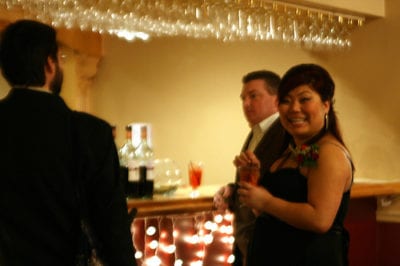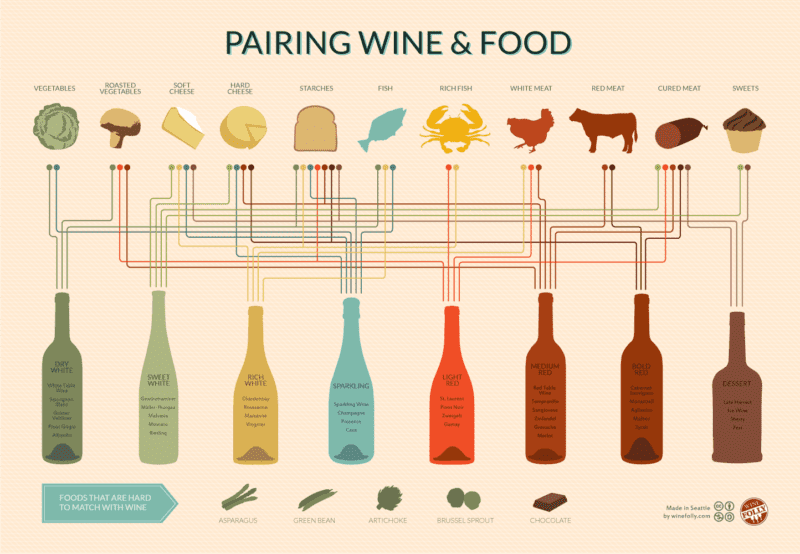
Photo credit: qunnaya
If you’re running or looking for a bar catering service, you’ll need to figure out what to serve at your event bar. Experienced caterers, mobile bartenders and bar catering companies often have a sense for what they need or have developed a formula to make sure they buy the right amount of the right types of beer, wine, and liquor.
It’s notoriously difficult because of the number of variable that come into play. Is it a cash bar or open bar? When is it? What day of the week is it on? What types of drinks does the host prefer?
While it’s nearly impossible to account for all the factors involved, we’ve laid out a method to help you find a successful starting point and some factors to consider on how you might want to adjust that. This is intended as a general guideline for bar catering at all types of events including weddings, festivals, corporate parties, conferences, and trade shows.
All of this assumes you’ll be offering both food and nonalcoholic beverages to your guests. We highly recommend that you serve both do as it both decreases consumption of alcohol and makes sure anyone driving or that doesn’t drink is not left out.
What to Offer
Packages
We’ve found the easiest way to organize offerings is by offering a top-shelf and a standard tier package and a wine and beer vs. full bar package.
This leaves your with four possible bar catering packages:
- Standard Wine and Beer
- Standard Full Bar
- Top-shelf Wine and Beer
- Top-Shelf Full Beer
For the majority of events, one of these four packages will be appropriate, but there are two additional options:
Wine and Beer plus a Specialty Drink
Some hosts will want to offer their guests something beyond just wine and beer, but don’t want a full bar either for personal preference or cost control reasons. A popular option is to offer a specialty liquor based drink that coordinates with the theme or has special significance to the host.
A Complete Bar
A complete bar goes beyond a basic full bar and includes not just liquor, but a wide range liqueurs, mixers, and garnishes. These can be more difficult to handle since you’ll have to stock a wide range of these and it will be more difficult to know what to serve.
Package Pricing
Pricing each package can be challenging. The easiest method of pricing your bar is to visit venues and restaurants in the area of the event and see what the typical charge is for whatever you’re going to be serving.
Once you know the average charge, multiply the cost of that drink by the number of hours of the event plus one. This is based on the pattern that at most events. The average guest drinks two drinks in the first hour and one each following hour.
For example, if you’re serving just beer and wine and the average, check for the typical cost of a beer or glass of wine in your area. Let’s say it’s typically $5 for a beer. If you’re serving at a 4 hour event, using our formula, you could charge $25 for a beer and wine only open bar.
For more detailed information on bar catering pricing each package, check out our post on event bar options and pricing.
Beer
Bottles are generally the best option both for ease of service and appearance. For whatever reason, cans have the stigma of being less classy as do kegs However, both cans and kegs still have their place. If you have a jockey box or kegerator, kegs can be a great option for certain types of parties.
In terms of what beer to serve, you’re best off not getting too exotic. If you don’t have experience with the crowd, ask the host what he thinks they’ll prefer. If it’s left up to you, opt for 2 to 4 popular options in your local area so there’s some choice, but you aren’t marking things overly complicated on yourself.
Wine
Choosing what wine to offer is more difficult than beer. While many people obsess over food and wine pairings, most guests aren’t sommeliers. If you’re concerned about matching wine with food appropriately, the below chart from winefolly.com is a good general guide.

If you aren’t serving the wine with food the typical split is 60% white and 40% red. However, this is shifting as younger generations tend to prefer red over white and for parties catering to the younger demographic this can reverse to something like 60% red and 40% white.
Liquor
Choosing the appropriate liquor is a little less difficult. The list below are the standard liquors to offer. The popularity of each depends a lot on the crowd. Vodka is almost always the most popular choice regardless of other factors. Gin seems to be more popular in the summer months (think gin and tonic). Scotch is generally favored by older guests. Bourbon and Whiskey are usually the most popular choices in the South, but much less so in other regions.
- Vodka
- Rum (light is generally more popular than dark)
- Gin
- Scotch
- Bourbon/Whiskey
- Tequila
Like beer, offer a Top-Shelf and a standard package for your bar catering liquor choices.
How much should you Buy?
Estimating how much alcohol to buy is probably the most difficult part of stocking an event bar. Not buying enough and running out looks bad, while buying too much means your fronting a lot of cash on inventory.
One way around this is to ask your supplier if you can return unopened bottles. That way you won’t deal with cash flow issues from buying too much, or worse, wasting it. If they won’t allow you to return unopened bottles, try to stick with generic brands you’ll be able to use at the next event.
The estimates below are for a typical 4 hour cocktail reception for 50 guests. If you’re going to round, round up. As I said before, running out of alcohol is typically considered poor form and won’t win you a lot of fans or get you called back for the next time they’re looking for a bar catering service.
The numbers are based upon 50 people as you’ll probably need about one bartender for every 50 guests or service will slow to a crawl. That makes it a good base number to work off of when doing estimates. You can multiply or divide the numbers given based on the size of your event.
The (not-so) Magic Bar Catering Formula
In order to estimate overall consumption, the typical estimate used is 2 drinks the first hour and then 1 drink/hour after that. For most caterers and event bars, this number holds true over time, but pay attention to the considerations included below to see how you may want to adjust this number up or down.
Beer
For a typical 4 hour event, 2 beers per person with no liquor (100 servings total). 1 beer per person if liquor is being served (50 servings total).
Wine
For a typical 4 hour event, plan on one 750 ml bottle for every three guests. So for 50 guests you can estimate about 17 bottles of wine. If no liquor is going to be served, this is likely to be closer to one bottle of wine for every two guests, or 25 bottles of wine for 4 hours.
Liquor
With liquor, it’s particularly important that you know you’re crowd as it there’s a lot of variability in terms of what people like. Older crowds often favors scotch, whereas the younger generations don’t care for it. Vodka is universally popular right now, so if you’re unsure, it’s probably best to get too much Vodka.
You can estimate about 2 cocktails per person over the course of a four hour event. That means for fifty people, you’ll need enough booze for 100 cocktails. Since each drink requires 1.5 ounces of liquor, that’s 150 ounces. That’s six 750 ml bottles (fifths).
For reference:
- 750ML (Fifth) (16 1.5 ounce servings/bottle)
- 1L (Liter) (22 1.5 ounce servings/bottle)
- 1.75L (Handle) (39 1.5 ounce servings/bottle)
For a 4 hour event with 50 guests, the following estimates are good starting points:
Beer and Wine Only
- 100 bottles/cans/servings of Beer
- 25 bottles of Wine
Full Bar
- 50 bottles/cans of Beer
- 17 bottles of Wine
- 150 ounces (6 750ml bottles) of Liquor
But Wait….There’s More!
While the information above should help you get started, here are some common factors that you may want to take into account.
Age group
Younger and Older age groups drinking the most. Younger groups lean towards beer and cocktails. Older guests tend towards scotch, vodka, and white wine.
Time of the year
If it’s hot out, people tend to drink more and lean towards tonic water and beer. If it’s cold, guests tend to drink less and favor red wine.
Day of the week
If you’re hosting a corporate mixer on a Wednesday afternoon, most guests are likely to take it easier since they’re in a professional environment and know they have to make it into the office. On the other hand, the same corporate mixer on a Friday evening could end with a lot more drinks going down.
Type of Party
Super Bowl parties and Fraternity parties are going to get rowdier than a business cocktail party. Plan accordingly.
Regional Differences
Know your guests. This is something that most caterers and planners won’t deal with unless they’re operating nationally or internationally, but there is a significant amount of variation between regions.
In the South, you’ll go through a lot more bourbon and beer than if you’re in New England. If you’re catering an event somewhere you haven’t worked before, reach out to a local caterer or bartender and ask if they would mind recommending how you can adjust your offerings.
Transportation
Are guests driving to the venue or is their transportation? If they’re driving, they won’t drink nearly as much.
Whew..
Obviously there’s a lot to think about here and we hope we’ve given you a good idea of where to get started. If you have any more questions or feedback, we’d love to hear from you! Say hello on Twitter @PortableBarCo or email me at taylor [at] theportablebarcompany [dot] com
Additional Resources:
A Tasteful Affair Party Planning Guide
Did you know Portable Bars can improve service at your event?
Check out our testimonial video.
[leadplayer_vid id=”52DC1A5269CDF”]